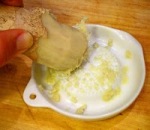Happy New Year!
Akemashite omedetou gozaimasu.
あけましておめでとうございます。
Being Yonsei (fourth generation Japanese born in the US) means that our Japanese New Year celebrations are a mix of both the traditional and modern, especially when it comes to holiday food. January 1st has been a big celebration for us every year but I never knew quite where the tradition began. So, of course, I googled "why is Japanese New Year celebrated?" and found out that it evolved out of rituals for the changes of season which were really important in Japanese farming. Which I totally get now because Japanese cooking is really based on what's in season. New Year or Oshogatsu (new month), is one of the most important celebrations of the year in Japan. Unlike celebrations in the US which normally mark the beginning of the end of all of our holiday hoopla, in Japan the New Year marks the beginning of a celebration where business's normally shut down for a couple of days and time is spent hangin' with the fam.
Which brings me to my family. I say the "Kimoto" way because we normally spend the New Year with my dad's side of the family and he was a Kimoto. He hasn't been with us for over 12 years now but I hold the time that I spend with his side of the family very dear to my heart because they remind me of him, especially my Auntie Alice. It's always hosted at her house and begins with a drink that my cousin makes from 7-up and sherbet. Very traditional Japanese, NOT. But yummy, YES! This year I took the opportunity to really scope out the spread and take some pictures of all of our delectable fare. There are the traditional dishes like sushi, sashimi, kamaboko (fish cakes), kuromame (sweetened black soybeans), kinpira gobo (simmered burdock root), kurikinton (sweet potato and chestnut) and osechi (boiled seaweed). I never really noticed that these were always served as I kind of avoided them when I was little but now that I'm all grown up and much more open to new foods and flavors, I have at least tried all of them. Here they are up close...
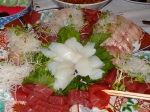
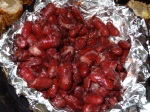
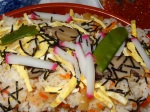
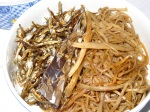

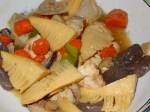
My mom always brings a very Americanized version of chicken teriyaki wings as her staple dish and they are always a crowd favorite. I look forward to eating them only once a year because 1. they are very fattening 2. they are so delicious I can't stop eating them 3.it's tradition! Here's the recipe for her yummy wings - I guarantee if you take the time to make them that you will be asked over and over to make them again. They are great for parties, watching sports, picnics or eaten left over and cold in lunches. Watch out though, they are addictive! Hope you enjoy it as much as my family does. Next year I'm claiming Japanese New Year's as part of my extended work vacation for sure!
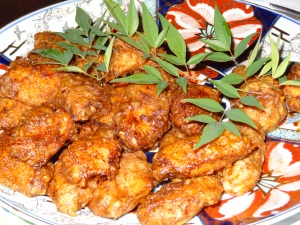
Okasan’s (Mom’s) Chicken Delicious Wings
Makes 40 wings
I try not to serve fried food to my kids but my mom’s recipe for these wings can really only be done when the wings are extra crispy. Unfortunately, this can only be achieved by frying. We make this once a year for New Year’s so it’s a special treat for all of us. It’s hard not to eat them all before they are even served!
Ingredients:
2 1/2 lbs. chicken wings - washed and towel dried
1 cup flour
1 cup water
3 ice cubes
2 cups vegetable oil or enough to fill a medium sized, deep saucepan about 1 ½ inches
Sauce:
1 cup sugar
1 cup soy sauce, preferably low sodium
2 tsp ginger, grated
4 tbsp Mirin
Heat sauce ingredients in a small saucepan to a boil and then turn down to simmer. Have a wire rack on an aluminum foil lined cookie sheet ready for the cooked chicken. Heat oil to medium high in a deep saucepan. Combine flour and water to make batter. Add ice cubes to batter to keep cold, mixing as ice cubes melt. Test the oil by adding a very small amount of batter to the hot oil to see if it fries up quickly. Add chicken wings to batter in batches so that none are touching. Fry in batches until both sides are brown and crispy, turning with metal tongs half way through. Have the saucepan of sauce nearby on the stove. Dip chicken wings in sauce directly after they are done frying for about 5 seconds. Remove and drain on a wire rack without touching so wings remain crispy. Serve hot or at room temperature.
Mirin (味醂 or みりん) – Preferred Brand –Kikkoman
Sweetened rice wine. Used to make teriyaki sauce and for marinades and dressing in replacement of sugar. Although this does contain low amounts of alcohol, it is safe for use in children’s dishes as there is normally a very small amount added.
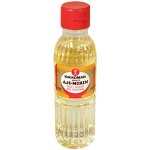
Peel the end of a fresh piece of ginger and use a Japanese ginger grater or a microplane to grate the ginger.
